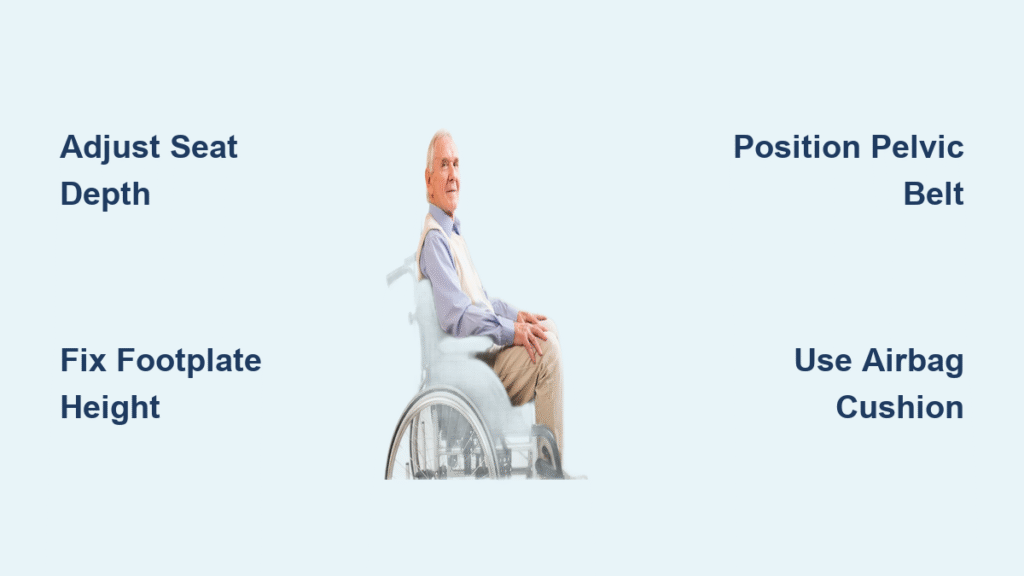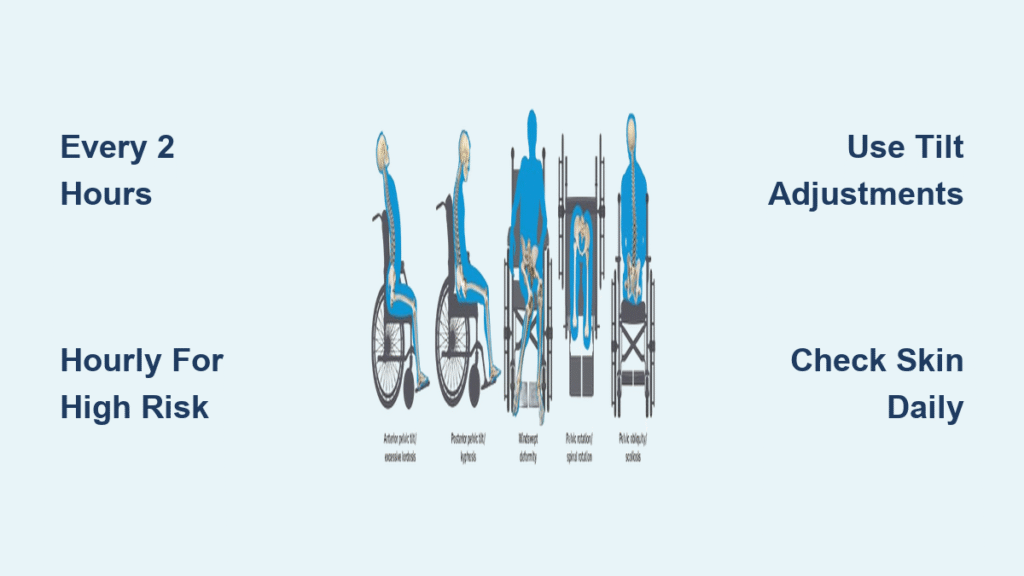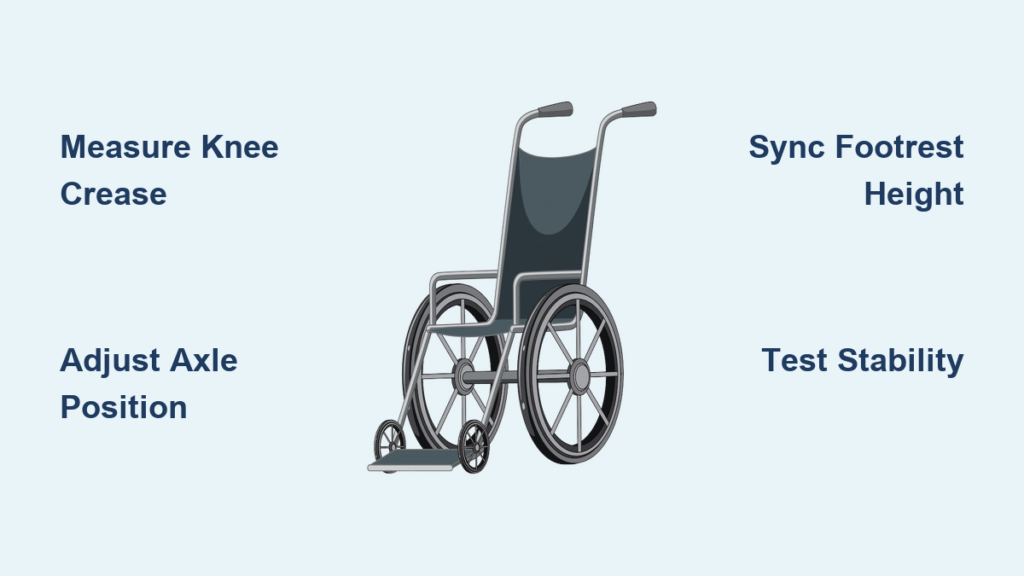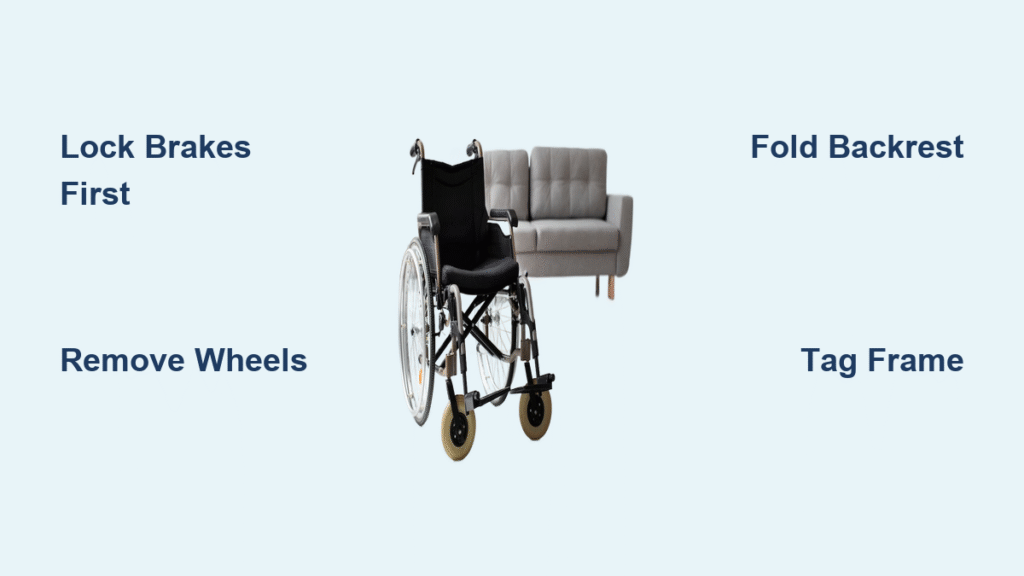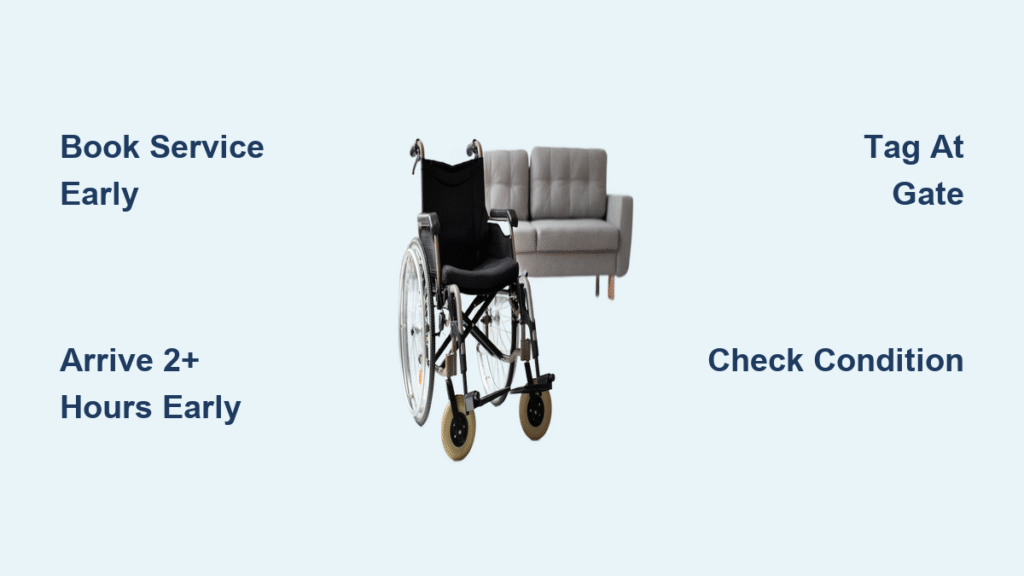Your elderly parent keeps sliding forward in their wheelchair, forcing you to repeatedly reposition them throughout the day. This frustrating cycle isn’t just exhausting—it’s dangerous. Each slide increases fall risk, causes painful pressure sores, and erodes your loved one’s dignity. The good news? Most wheelchair sliding issues can be resolved through proper positioning techniques and equipment adjustments that work immediately.
Sliding affects nearly 80% of elderly wheelchair users due to improper fit and age-related physical changes. This guide delivers practical solutions you can implement today to keep elderly wheelchair users safely positioned without resorting to uncomfortable restraints. You’ll discover how simple adjustments to seat depth, cushion selection, and positioning belts can transform your daily caregiving routine.
Why Your Elderly Parent Keeps Sliding Forward in Their Wheelchair
The Hamstring Tightening Connection to Wheelchair Sliding
Age-related hamstring tightness actively pulls the pelvis forward, creating an unstable seated position. When your elderly parent’s hamstrings can’t straighten to 90 degrees, they naturally slide forward seeking stability. This physical limitation combines with reduced torso control to create the perfect sliding storm—especially during afternoon fatigue when muscle weakness increases.
Critical red flag: If sliding worsens throughout the day, hamstring tightness is likely the primary culprit rather than equipment issues. Test this by having your parent sit with legs extended—if they can’t maintain a 90-degree knee angle without discomfort, hamstring flexibility needs addressing before other solutions.
Wheelchair Fit Issues Triggering Daily Repositioning
Eight out of ten elderly wheelchair users experience at least one critical fit problem causing sliding. The most common offenders include:
- Seat depth too deep: When your parent can’t comfortably reach the backrest, they slide forward searching for support
- Incorrect footplate height: Too high causes upward thigh tilt, too low shifts weight forward
- Poor back support: Flat backrests fail to match natural spinal curvature
Pro tip: Document sliding patterns for three days—note when it happens (after meals? during transfers?), how far they slide, and what activities trigger it. This reveals whether the cause is physical limitation or equipment mismatch.
7 Critical Measurements Before Fixing Wheelchair Sliding
How to Check Seat Depth for Elderly Wheelchair Users
Seat depth directly determines whether your elderly parent stays positioned or slides constantly. To measure correctly:
- Have your parent sit fully back against the backrest
- Place two fingers between the seat edge and the back of their knee
- If fingers don’t fit, the seat is too shallow; if multiple fingers fit, it’s too deep
Warning: Too deep seats cause sliding as your parent searches for back support. Too shallow seats force them to use feet for stability, creating dangerous pressure points on hip bones.
Verifying Proper Footplate Positioning
Footplate height dramatically impacts sliding risk. Follow these steps:
- Position your parent’s feet flat on the plates
- Check that thighs run parallel to the seat surface
- Confirm knees form a comfortable 90-degree angle
Common mistake: Caregivers often set footplates too high, causing upward thigh tilt that concentrates pressure on sitting bones. This discomfort makes elderly users slide forward seeking relief.
The Right Cushion Choice to Prevent Elderly Sliding
Airbag vs. Gel Cushions: Which Stops Sliding Better?

Not all wheelchair cushions prevent sliding equally. For elderly users, airbag cushions outperform alternatives with their unique combination of stability and comfort:
- Airbag cushions: High stability, light weight, and minimal maintenance make them ideal for all-day use
- Liquid gel cushions: Heavy and restrictive—better for short-term positioning
- Air cell cushions: Require frequent adjustments that complicate elderly care
Expert note: Airbag systems maintain stability even as your parent shifts position, unlike gel cushions that become slippery when warmed by body heat. The breathable material also prevents heat buildup that causes restlessness and sliding.
Perfect Pelvic Belt Placement for Elderly Wheelchair Safety

Common Pelvic Belt Mistakes That Cause More Sliding
Most caregivers position pelvic belts incorrectly, actually increasing sliding risk. Follow this foolproof placement method:
- Position your parent fully back against the backrest
- Place the belt across the hip bones—not the abdomen
- Maintain exactly one finger-width of space between belt and body
- Ensure the belt sits level without twisting
Critical error: High belt placement above the hips creates abdominal pressure that triggers instinctive forward sliding. Always position at the iliac crest (hip bone level) for maximum effectiveness.
Footplate Height Fixes That Stop Forward Sliding
The 90-Degree Knee Test for Proper Footplate Positioning
This simple test reveals whether footplate height contributes to sliding:
- Position your parent with feet flat on plates
- Observe the knee angle—should be exactly 90 degrees
- Check thigh alignment—must run parallel to seat surface
- Verify even pressure distribution across both thighs
Quick fix: If thighs tilt downward, raise footplates incrementally until parallel. If thighs tilt upward, lower plates slightly. Small 1/4-inch adjustments often make dramatic differences in sliding prevention.
Tilt-in-Space Technology for Elderly Wheelchair Users
When to Use 45° Tilt for Maximum Sliding Prevention
Tilt-in-space wheelchairs like the VIP515 transfer weight from hips to back without changing hip angle—perfect for elderly users with limited flexibility. For maximum sliding prevention:
- Set tilt to at least 45° for significant pressure redistribution
- Use tilt before meals to prevent post-eating sliding
- Increase tilt during afternoon fatigue periods
Pro tip: Combine tilt-in-space with reclining backrests (like the MVP502) for users with severe sliding issues. The dual-system approach opens the hip angle while redistributing pressure, eliminating the physical need to slide forward.
Emergency Preparedness for Wheelchair Sliding Incidents
Single-Operator Lift Solutions for Fallen Elderly Users
Despite prevention efforts, sliding sometimes leads to falls. Prepare with these essential safeguards:
- Keep a Raizer Emergency Lifting Chair accessible within 3 feet of wheelchair areas
- Train all caregivers on one-person operation techniques
- Maintain clear pathways (minimum 36-inch width) for emergency access
Time-sensitive action: After any fall incident, immediately reassess your parent’s wheelchair configuration. Sliding patterns often change after falls due to new fear responses or physical discomfort.
Daily Wheelchair Positioning Checklist for Caregivers
Implement this 5-minute morning routine to prevent sliding all day:
- Test hamstring flexibility: Can your parent straighten legs to 90 degrees?
- Verify seat depth: Two fingers should fit behind knees
- Adjust footplates: Ensure thigh parallelism with seat surface
- Position pelvic belt: Across hip bones with one finger clearance
- Check cushion inflation: Firm but yielding to pressure
Weekly maintenance: Every Sunday, inspect belt wear patterns, cushion integrity, and wheel alignment. Document any changes in sliding behavior to catch emerging issues early.
Dignity-Preserving Strategies That Eliminate Restraints
Physical restraints should never be your first solution. Instead, implement these dignity-focused alternatives:
- Positioning wedges: Fill gaps between user and wheelchair sides
- Lateral trunk supports: Prevent sideways leaning that triggers forward sliding
- Breathable airbag cushions: Eliminate heat discomfort that causes repositioning
Expert insight: Elderly users slide because something hurts or feels unstable. Fix the underlying discomfort, and sliding stops naturally—no restraints required. Always ask your parent what feels uncomfortable before implementing solutions.
Long-Term Wheelchair Configuration for Aging Users
Elderly needs change as conditions progress. Build flexibility into your wheelchair setup:
- Choose height-adjustable components that accommodate changing physical needs
- Select cushions with multiple firmness settings for evolving pressure requirements
- Opt for modular systems that add tilt/recline functions as mobility declines
Quality of life impact: Proper positioning maintains eye contact during conversations, reduces caregiver strain during repositioning, and preserves your parent’s independence—all critical for emotional wellbeing.
Key Takeaways: Your Action Plan to Stop Elderly Wheelchair Sliding
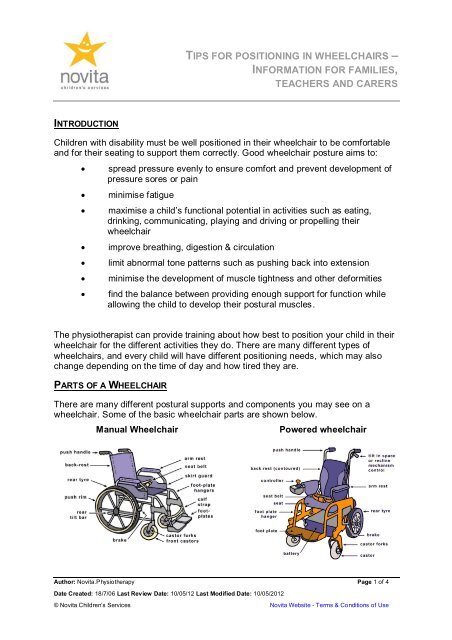
- Measure first: Incorrect seat depth causes 70% of sliding issues—verify measurements before buying accessories
- Prioritize comfort: Uncomfortable positions won’t be maintained—your parent will slide to find relief
- Start simple: Adjust footplate height and pelvic belt placement before investing in advanced systems
- Monitor patterns: Track sliding triggers to identify physical vs. equipment causes
- Preserve dignity: Every solution should enhance independence, not restrict movement
Remember: The goal isn’t preventing all movement—it’s creating stable, comfortable positioning that allows your elderly parent to participate fully in daily life. With these proven strategies, you’ll reduce repositioning efforts by up to 80% while significantly improving safety and quality of life. Start with one adjustment today, and you’ll immediately notice less sliding and more comfortable sitting.

